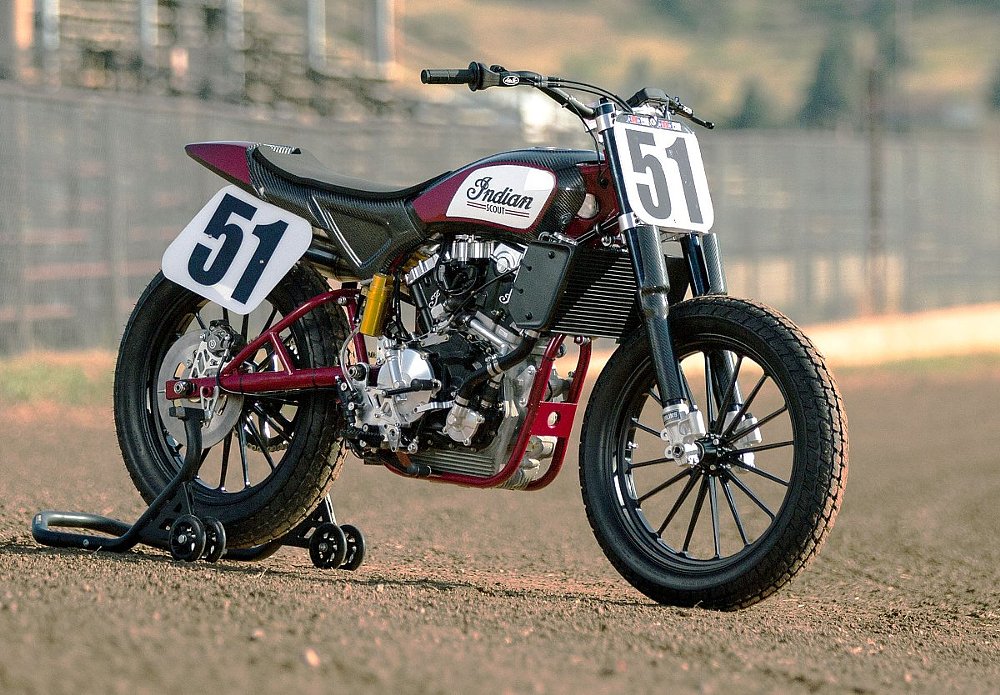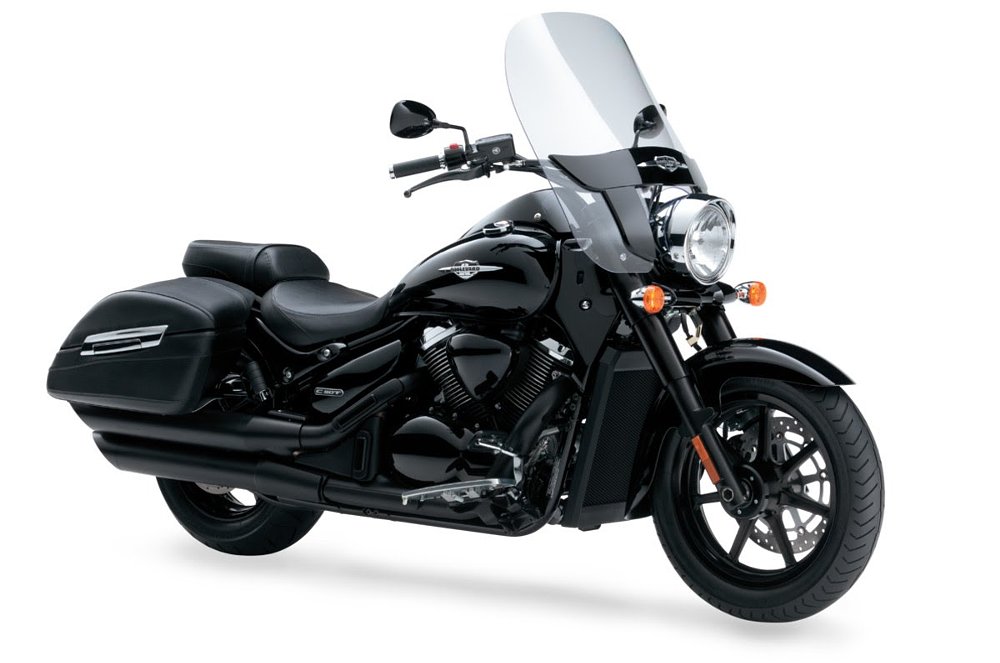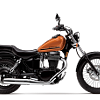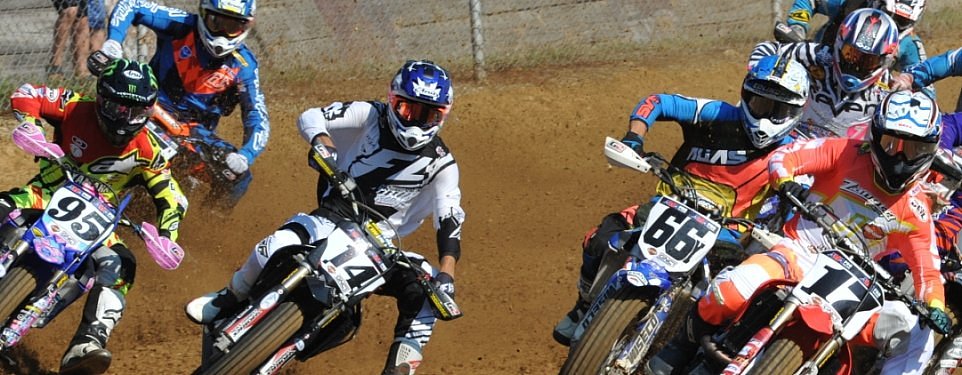Cruisers. Sheesh. Why can't I buy an Indian tracker, order a Harley a la carte, the way I want it, or get a Suzuki touring rig like a Cavalcade? And how the hell did Royal Enfield take over the world while I wasn’t looking?
Cruisers are arguably the most emotional category in motorcycling. Objective performance standards don’t matter much. Their styling and riding position are polarizing. Yet the segment is unbelievably important in the United States. According to Powersports Business, more than one in four new street-legal motorcycles sold in the USA is a cruiser, and half of all used street-legal bikes sold here are cruisers. Half. Considering that, why do some corners of the segment feel so dark and neglected?

What is Indian waiting for?
Yes, they introduced the Scout Bobber recently, but that felt very much like a “hold on, we’re working on something” offering. Indian has spent a lot of money on the victories they have earned in American Flat Track racing this year, in terms of both machinery and riders, yet it’s difficult as a customer to translate those victories into purchasing direction. The Scout in all variants is a pretty different bike than the FTR750 Indian races. (That same bike can be purchased by enterprising privateers, but at nearly $50,000, Indian is surely not relying on the FTR to generate the return on their investment.)
Mark my words, they have something up their sleeves, and it will be heavily based on that bike, likely sharing some components with the Scout. Indian has probably noticed that while not all the new H-D Softails received accolades, the most sporting of the lineup, the Fat Bob, was met with almost universal praise. The clamor of voices calling for a street version of an FTR has reached a deafening roar. Something along those lines simply must be on the way.

Why doesn’t Suzuki sell a model with hard bags? Or a model with a top box?
Seriously. Why is their most touring-friendly cruiser missing speakers, fairings, and anything to make a passenger feel like more than just an afterthought?
Has Harley done enough?
In the beginning of this article, you may recall that I mentioned that cruisers do not generally trade on their performance prowess. That does appear to be changing slowly, though. Harley-Davidson, the most important cruiser manufacturer in the United States, has made great strides this year with the introduction of models that place a much heavier emphasis on factors like ground clearance, lean angle, and power-to-weight ratio, borne out in their sportier models like the Street Rod and Fat Bob.
If Indian does indeed come out swinging as I’ve just promised you they will, will Harley’s “fast” bikes look too conservative? Will riders pass them by on the roadways and the showrooms? Are they sweating that very question right now, or are they primed to release models with even more focus on burning up gas, rubber, and clutches? And is Harley concerned about this seemingly golden opportunity Indian has to offer a wider array of products?
Before you formulate an answer, remember a few things. First, Harley was quiet about sunsetting the V-Rod, a bike that was far faster than either of the two “sporty” models they rolled out in 2017. And secondly, the Sportster line feels like it’s basically been put on autopilot. It’s in dire need of an overhaul to put the “sport” back into the Sportster.

Why is the Honda Fury still for sale?
Honda makes some superb bikes. I have never ridden a Fury, but by all accounts, it’s a very docile motorcycle relative to the roughneck-type bikes it emulates. (Spurg rode one and he seemed to like it and said it was a good rider.) The Fury is simple to understand: factory chopper. (Is that an oxymoron?) If you love rake and you love having the warm, fuzzy feeling a warranty can confer, the Fury seems like it should be just perfect. An MSRP that’s actually decreased since the bike’s inception sure doesn’t hurt, either.
But this bike is a rolling paean to pre-Recession America. A 200 mm wide rear tire? A 1300 cc engine? A gas tank that looks like it was built by that guy who cheated on Sandra Bullock? Fury is a time machine, but it doesn’t turn the time knob back far enough. It’s unintentionally a retro bike. In the entire time this bike has been for sale, I’ve only ever seen one in the wild. Are there still people buying this machine? Is Honda just hellbent on paying for the tooling, rather than taking a loss?
Why can’t Harley, the king of options, offer options?
Harley-Davidson has done a masterful job of positioning itself as the preeminent motorcycle manufacturer willing to cater to customization. The narrow focus on heavy cruisers in many flavors, with options galore and a P&A catalog that is as thick as a phone book (‘member those?) means you can seemingly get a Harley any way you want it… almost.
Why is the new 114 engine not an option in the low-rent bikes? Just because I’m sitting in the cheap seats doesn’t mean I don’t want a hot dog, Harley. Why can’t I get color-matched hard bags on my new Heritage? What if I don’t want dealer-installed anything? Who wants to have to sell an engine or soft bags after buying the upgraded replacement?
If you guys are going to mix-and-match parts and call them new models, why can’t we mix and match, too, and make my own? Harleys used to be Legos. Let’s not do away with that. Build ‘em to order, please!
TL;DR: Because monies.

How is the Savage not selling by the truckload?
Savage, S40, LS650... whatever. All the same bike. Retro bikes are on fire right now. Custom anything in the motorcycle world has never gone out of style. And in the cruiser world, “hot and new” isn’t often the mantra that sells bikes, anyway. The S40 could be the perfect platform. It’s truly a bike with a long history, it does its job remarkably well, and it’s infinitely customizable. (Ryca makes nifty kits to turn these bikes into whatever you want, for those who need a little help.)
Yamaha sells the retro SR400 for a cool $5,999. (Not exactly the same bike, but its selling point should be the same as the S40’s: it’s old-timey and quirky, yet reliable.) For $300 less, you can get an S40 that packs another 250 cc and electric starting. To me, this bike is the modern-day Yamaha XS650: a dirt-cheap chameleon that’s not a powerhouse. They’re as reliable as a sunrise, and can be molded into literally anything: chopper, cafe, scrambler, flat track lookalike.
They use one big carb, which eliminates any of the jet-fouling issues shared by multi-cylinder bikes, they’re cake to work on, and Suzuki discounts them heavily. They’re not a huge drain on the ol’ wallet, they are highway capable to some degree or another, and there’s a sea of parts available because this bike’s been produced for 32 model years. Why is this not the bike I see young riders on?
Is Royal Enfield about to explode in popularity in America?
They’ve been on a roll. In 2005, the company sold 25,000 motorcycles. It was 300,000 in 2014, and now they’re right near the 700,000 mark. That’s more than Harley, BMW, KTM, and Ducati. Combined. Much like Harley-Davidson, they sell classically-styled retro-appearing machines. Also like Harley, their legendary status in their home country probably holds more import for a domestic buyer even than their spec sheets. They’ve just started production in the third factory they’ve built, near Chennai in India, and that boosts their potential output to 825,000 machines.
Unlike Harley, Enfield dominates with smaller-displacement bikes: everything sold in the United States is powered by a 350 or 500 cc single. Enfield also launched a small adventure bike, the Himalayan, powered by a 400 cc thumper. Expect that bike to come to America soon. I wouldn’t be surprised at all to see other models pop up; the company has not veiled its intent to expand its footprint globally, and a diverse product mix will undoubtedly be required to make that come to fruition.
Or is Indian?
The current version of Indian has a lineup similar to Harley-Davidson’s. At the present time, though, a manufacturer producing only heavyweight cruisers is painted into a bit of a corner.
Quick history lesson: In its heyday, Indian was a technology leader. They built a boxer... before BMW. They made a lovely inline four-powered motorcycle... in 1928. The later fat-fender junk that modern Indian now apes was just a final gasp attempt to cover up the fact they failed to develop an OHV big twin. If Polaris’ Indian can hit the books and conjure up some of the magic from that time period, it would give them significant latitude to build bikes with a little more variety. If modern-day Indian can pop out a speedy standard (like I told you they will earlier) or sporty machine and maybe an off-road-capable bike or two, they can pivot and become the versatile full-line manufacturer Japan Inc. is, plus have the heritage and name to make them appealing to diehards. They’d possess a unique appeal (domestic full-line manufacturer) that could make them a sales powerhouse.
I can’t tell you what the future holds for cruisers. But I sure can ask what the heck is going on right now!































 Riders Preferred Membership
Riders Preferred Membership






